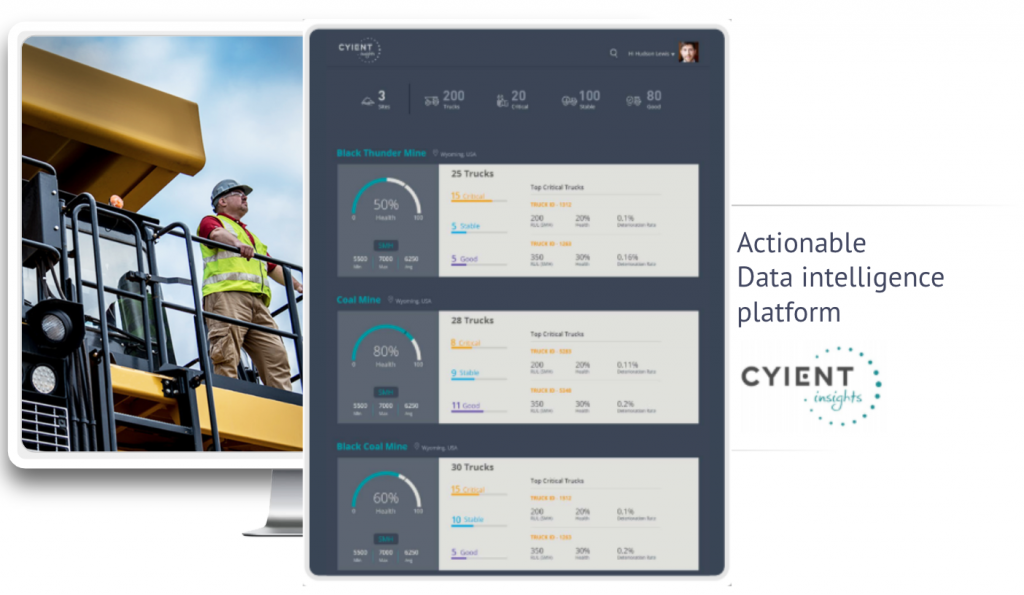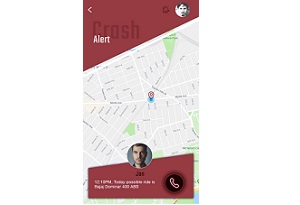“It’s the beginning of machines taking over the world.” The IoT (Internet of Things) is an exciting set of new technologies designed to connect various devices and networks in a wide range of applications. The IoT landscape is changing rapidly. More devices are being connected to the internet every day.
IoT devices can range from personal devices like wearables smartwatches, and other health monitors, to devices that can manage homes by controlling other appliances and industrial applications to monitor and manage machinery and equipment, says Sushree Swagatika, marketing manager, Divami.
Creating a great user experience for these devices is difficult. Many designers have been testing the limits of what users will accept from an IoT device. We will take into account three IoT projects to showcase the things to consider while designing for IoT applications for any consumer or industrial project.
Quin Ride offers an innovative range of smart helmets to give users modern and reliable safety. It delivers unparalleled performance for the modern rider, providing essential and practical technology with flawless integration. The Intelli Quin Smart System makes Quin the first motorcycle helmet to offer integrated Crash Detection and SOS Beacon. In case of a crash or initiation of an SOS event, the BT paired mobile app sends notifications to emergency contacts along with location information.

Cyient Insights Predictive Analytics Application is a visual dashboard that generates insights and suggests actions for equipment maintenance, which can be easily intercepted by engineers with no expertise in data analysis. Cyient has the experience and integration capabilities to implement a Connected Equipment strategy and enable machines to be safer, more intelligent, more connected, and more reliable. It offers a connected equipment strategy and IoT implementation to help new insights on product performance that can resolve unique operating challenges for OEMs.

Collins Aerospace (now known as Raytheon Technologies), a provider of technologically advanced and intelligent solutions for the global aerospace and defense industry, built Avatar, an application for real-time asset tracking and monitoring on the airport tarmac for CIAL (Cochin International Airport). The application provides ground managers a clear overview of all turnaround activities with automatic alerts for performance-impacting delays. It analyses and improves the management of processes, people, and ground service equipment to help achieve higher on-time performance levels and deliver cost savings.
- The UI Design approach: The Quin ride app is a B2C app designed to be used by bikers who are conscious about their on-road safety. Naturally, while designing for this broad user base, we kept the designs straightforward to improve usability. The mobile app was designed to visually appeal to the audience in their late 20s and early 30s who may not have a technical background. That’s why the IoT elements are not working on screen, and everything happens in the “backend.” On the other hand, while designing for an enterprise like Cyient, the target users are engineers who have no expertise in data analysis. Cyient needed a dashboard interface that provided summative data, meaning all collected information required to be simplified to give users insights into how to run their businesses efficiently. For Collins Aerospace, we designed the entire map of the CIAL tarmac, all the different types of assets, and efficiently identified their statuses based on the violations. The interactive map was also used to create geofences and alert the respective operators about incidents. While designing for IoT, it is essential to conduct necessary user research to figure out the user characteristics and use cases to ensure the GUI suits the momentary needs.
- The intended purpose: The essential aspect of the design is whether it fulfills the requirement of its intended purpose. For Quin, knowing that the designs would considerably impact somebody’s life in an emergency made it all the more nerve-racking. Since the app had to cover the functionality and workflows of both the rider and the responder, it was essential to think through all the real-life use cases, including all possible edge cases, with utmost care. On the other hand, Cyient’s Predictive Analytics Solution is meant to provide performance data on millions of dollars worth of mining equipment in a ready-to-use format for engineers. In this scenario, there is the need for a dashboard that alerts engineers about upcoming machine or system failures. Here the role of the IoT design is to help them manage the crisis with minimal downtime. Furthermore, the dashboard must quickly allow users to browse through available data, conduct analysis, and build an action plan- all within the single platform. With Collins Aerospace’s IoT platform, Avatar, airport, and airline personnel access ARINC AirDB. The single web-based interface has access to flight schedules and related concurrent information. Hence, the need was for a comprehensive dashboard that was visually summative and provided an immediate action plan based on the collected data.
- Form factor consideration: While designing for the consumer mobile IoT application, the interface had to be more jazzy and appealing; yet functional and intuitive for a more straightforward setup and usage. The mobile form-factor design fulfilled the users’ need for a neat package within minimal space. On the other hand, the design for the predictive analytics IoT application and the airport operations, asset management, and tracking system used the bigger form factor to fully view the critical metrics and visualisations required by the engineers and the airport and airline personnel. In summary, the designs vary based on the use case, and it is integral to know what the user needs.
- Personalisation: While the scope of the personalisation may vary across applications, it is still critical for the optimum users’ experience. While onboarding a user, apps like Quin can customise the performance or usability per the vehicle, helmet specifications, or in-case-of-emergency contacts. On the other hand, the enterprise apps can customise the dashboard and view according to the user’s role and accordingly provide custom graphs and visualisations. While the scope for personalisation is much more in a B2C app, it is foolish to assume that B2B apps and platforms don’t need personalisation.

- Seamless integration & Usability Testing: For any IoT application, seamless integration with multiple devices, form-factors, and connectivity over a network is an absolute requirement. While the app may be functional and performs well in all aspects of its functionality, its acceptance by the user in terms of a good experience ease of usage, learnability, and satisfaction will only determine its success. Hence usability testing is critical and must be done in the middle and end of the design process. For Quin app testing, it was vital to imitate the high-tension use cases and test the app’s usability; whereas, for the other two, what mattered was the feedback received from the teams.
Truth be told, it is challenging to design for IoT as there is a lot of data collected that needs to be shown in a structured way. The trick is to identify the data points absolutely necessary for action. While designing for IoT, the UX UI Designers need to put themselves in the user’s shoes and make sense of all the actionable items.
The author is Sushree Swagatika, marketing manager, Divami
Comment on this article below or via Twitter: @IoTNow_OR @jcIoTnow










